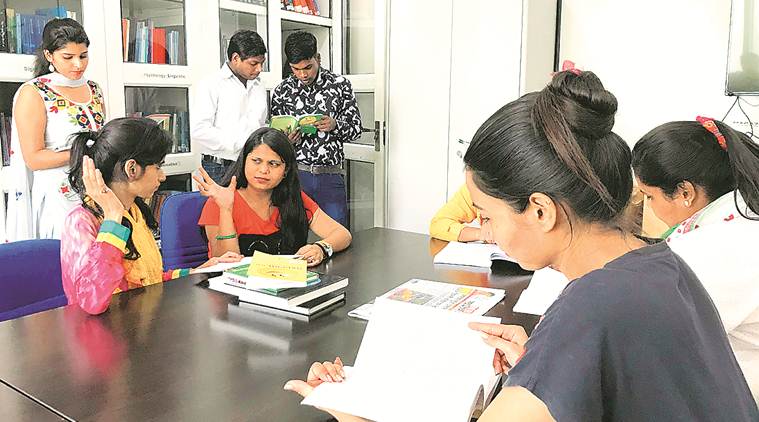 The Indian Sign Language Research and Training Centre was set up in 2015.
The Indian Sign Language Research and Training Centre was set up in 2015.
Even as the Delhi High Court hears a petition seeking official status for the Indian Sign Language, the first steps in this direction are being taken at the Indian Sign Language Research and Training Centre (ISLRTC) in the capital.
Set up in September 2015 by the Union government, the centre, the first-of-its-kind in the country, intends to codify Indian Sign Language and prepare interpreters who can help train the hearing-impaired. Last year, it came out with a dictionary with over 3,000 signs, relating to words commonly used in academic, legal and medical circles.
As of now, the Indian Sign Language is taught only in a handful of public and private institutes as a course, including those offering diplomas such as the Ramakrishna Mission Vivekananda Educational and Research Institute, Coimbatore, and Ali Yavar Jung National Institute of Speech & Hearing Disabilities, Mumbai.
On September 12, an HC bench of Chief Justice Rajendra Menon and Justice V K Rao had issued notices to the Union Home Ministry, which is in charge of languages, on a petition by disability rights activist Nipun Malhotra seeking official status for Indian Sign Language, to bring it on par with the 22 constitutionally-recognised languages. The next hearing is on December 10.
Underlining what led him to file the petition, Malhotra — who was diagnosed at an early age with arthrogryposis, leading to underdeveloped limb muscles — said, “Earlier this year, we did a sensitisation programme for police officers in Delhi, and they did not know there was an Indian Sign Language!”
Rakesh Gangwal, an assistant professor teaching Interpretation Education at the ISLRTC, said people often don’t realise that sign languages are not uniform. “Every language is based on culture. So is Indian Sign Language. For instance, the sign for marriage differs from one part of the country to the other and also varies among religions and regions.”
Still, he says, 75% of the signs used by the hearing-impaired across the country are similar.
Dr Abhishek Kumar Srivastava, who has been teaching Sign Linguistics for more than 10 years, including at the centre, describes the difference between Indian Sign Language and sign languages of other nations as stark, like “between Hindi and Greek”.
The ISLRTC is next planning a calendar for 2019 with QR codes describing the festivals each month. When scanned with a mobile, these codes would open YouTube videos describing the festivals in sign language.
ISLRTC Deputy Director Sanjay Kumar said, “The CBSE is also considering introducing Indian Sign Language and Braille in their curriculum for students with special needs.”